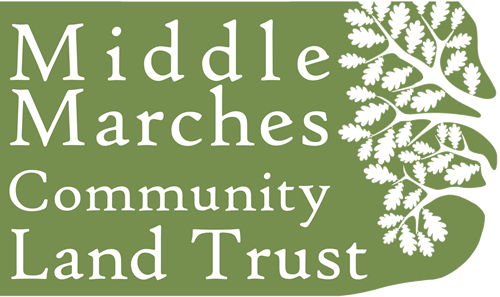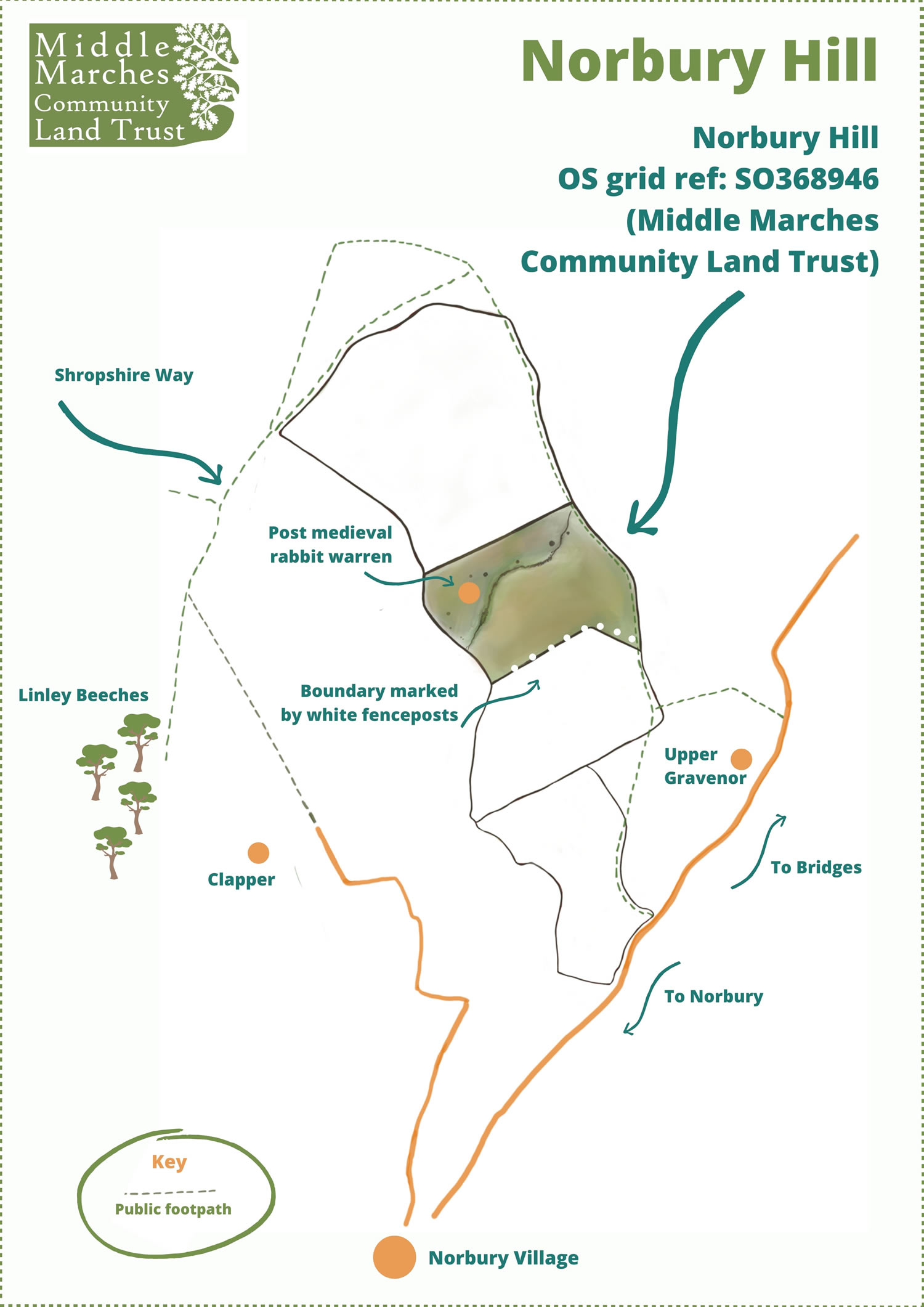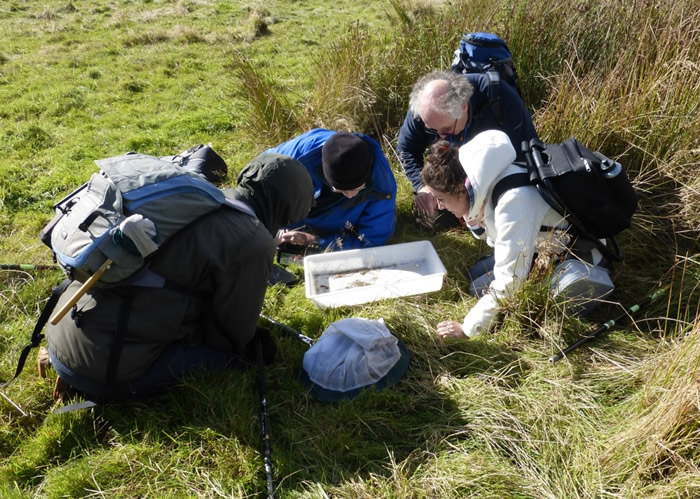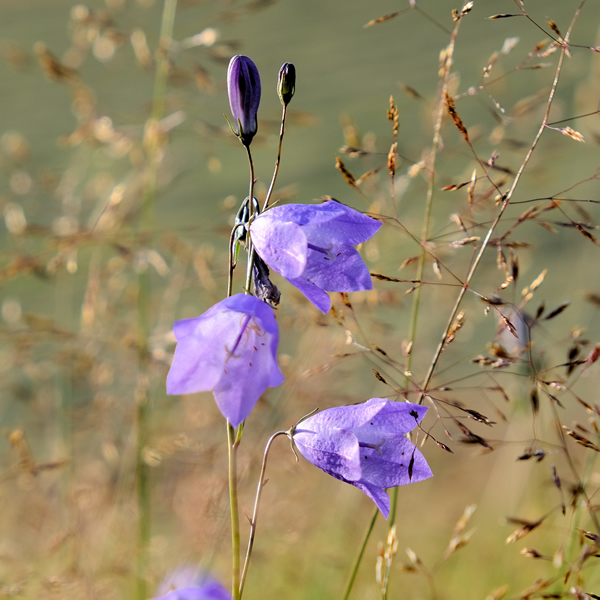Norbury Hill
Norbury Hill
July 2024 update
Would you like to come and see a working horse in action on Norbury Hill, near Bishops Castle in the next week or so?
We have a call for volunteers for the following dates: 31 July and 1 August, when Barbara Hadrill will return with her wonderful horse to roll the bracken for two days. This is done as part of the ongoing management of the site to help insects and flowers to thrive on the hill (rolling bracken helps to weaken it). She will need somebody else to be present on the hill during work hours. If anybody would like to help do this and can spare a couple of hours please let Rob know on rob@robrowe.co.uk or 01588 442008 – NB: It is 20 mins walk uphill to the site so we especially welcome anybody with a 4WD vehicle! Do come also if you would just like to see it happening, but do let us know you are coming and when and we can give you more information!

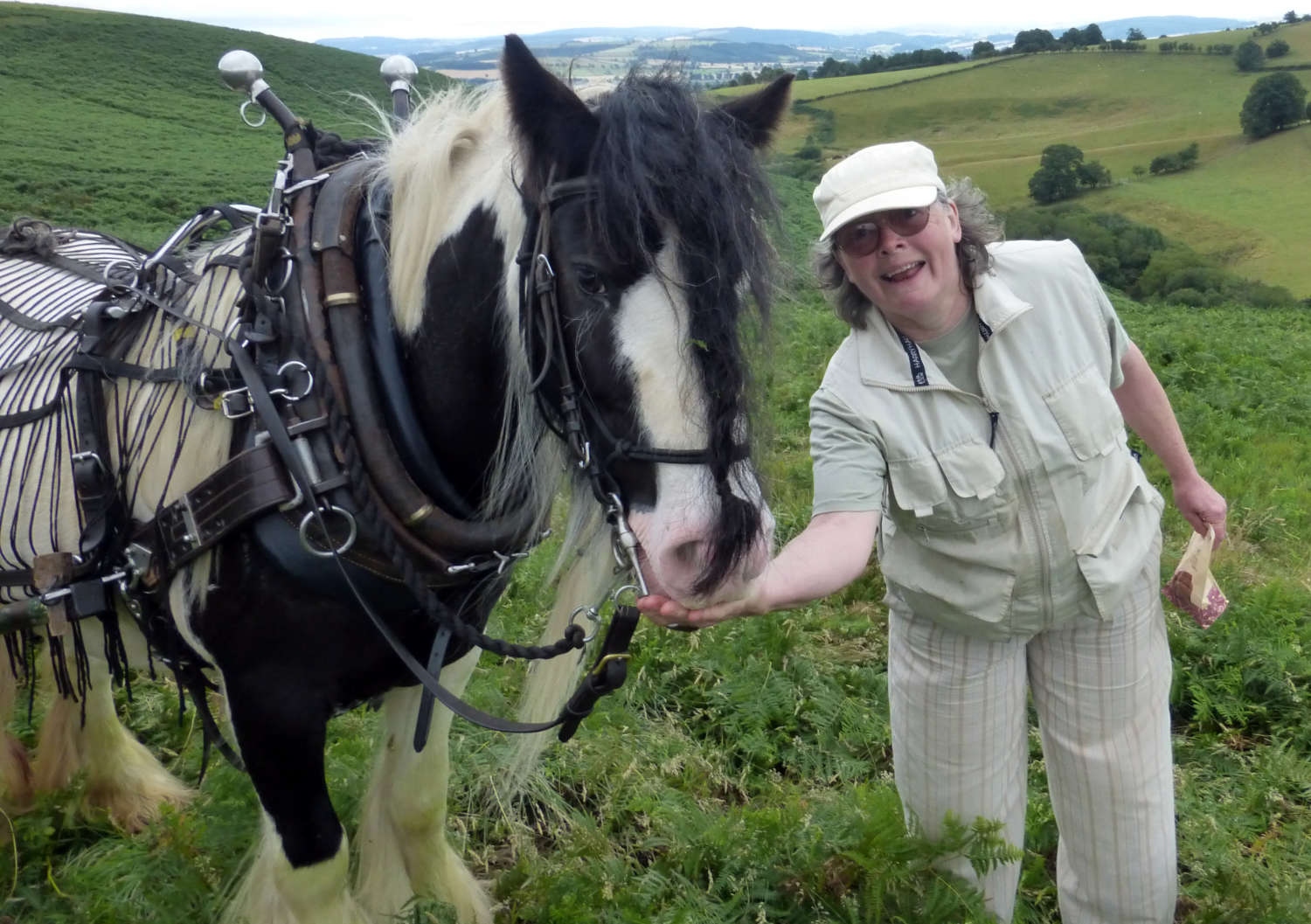
May 2024 update
National Trust and MMCLT volunteers have been hard at work trying to save the Small Pearl Bordered Fritillary Butterfly (SPBF) by planting out specially-grown Marsh Violets on site – a foodplant of the caterpillar.
Watch a short clip from ITV News at Ten which filmed some of the planting out of Marsh Violets on Norbury Hill in May 2024!
Situated a mile north of the village of Norbury in south-west Shropshire, Norbury Hill has been described as ‘the largest stepping stone’ between two important sites of conservation, the Long Mynd and the Stiperstones.
The Middle Marches Community Land Trust took possession of 47 acres (19 ha) of Norbury Hill in May 2021 having raised £45,000 from individual donations and with an interest free loan from a member to make up the balance.
Context
The eastern half of the site at 1300 feet (400 m) above sea level is mainly semi-improved grassland with some rushy areas with remnants of heathy grassland. It is divided from the western section by a north/south fence; the western section has an extensive bracken area sloping steeply down to the valley bottom. The bracken camouflages some post-medieval rabbit warrens and, where the bracken litter isn’t too deep, wood sorrel and bluebells flower. Across the Hill there are good examples of wetland plant communities, which flourish next to small streams running off the high ground.
Ecology
MMCLT commissioned an extensive ecological survey using a grant from the Stepping Stones project, and this was completed over summer 2021.
A link to this detailed survey can be found here Norbury MMCLT report 2021, but the main findings were:
♦ Around 200 species of plants were recorded. Harebell, heath bedstraw and heath speedwell may still be found on the hilltop, and among the more unusual wetland plants are marsh violet, marsh valerian and lesser skullcap.
♦ Of the 45 bird species identified, Linnet, Skylark and Meadow Pipit are important breeding species. Curlew feed here in the summer and there is potential for breeding on the site. Feeding Snipe are quite common in winter and raptors such as Red Kite and Buzzard hunt over the Hill.
♦ So far 200 invertebrates have been identified. Amongst the more attractive species are Green Hairstreak and Wall Brown butterflies. Golden-ringed dragonflies use the streams for breeding. Bilberry Bumblebees collect nectar and pollen from wild flowers on the site when the bilberry at the nearest heathland at Nipstone is not in flower.
♦ The Small Pearl-bordered Fritillary breeds on marsh violets on the adjacent land and we hope to attract this species on to MMCLT’s land as management increases habitat suitability.
Walks
During the first year several guided walks took place on the hill, both for MMCLT members and for other interested parties and partners. In the first year volunteer workdays have focused on cutting bracken, which has been supplemented by one day with a contractor and machine.
Access
The northern boundary of the site runs near to the Shropshire Way at Linley Beeches and there is a bridleway along the eastern edge that leaves the lane one mile north of Norbury village. Please stay on the bridleway and keep dogs on leads to avoid disturbance of wildlife. Note that at some times of year there may be cattle or sheep on the site as part of the habitat management.
Donating towards Norbury Hill
MMCLT would be very grateful to receive additional donations to help with the management of this important purchase and to help repay the loan as quickly as possible. If you would like to donate directly to Norbury Hill, please follow this link.
Any questions?
If you would like to know more about Norbury Hill please contact us at info@middlemarchescommunitylandtrust.org.uk.
Address
Enterprise House, Station Street, Bishops Castle, SY9 5AQ
Email us
info@middlemarchescommunitylandtrust.org.uk
Telephone
01743 891492 (Dr Richard Keymer)
